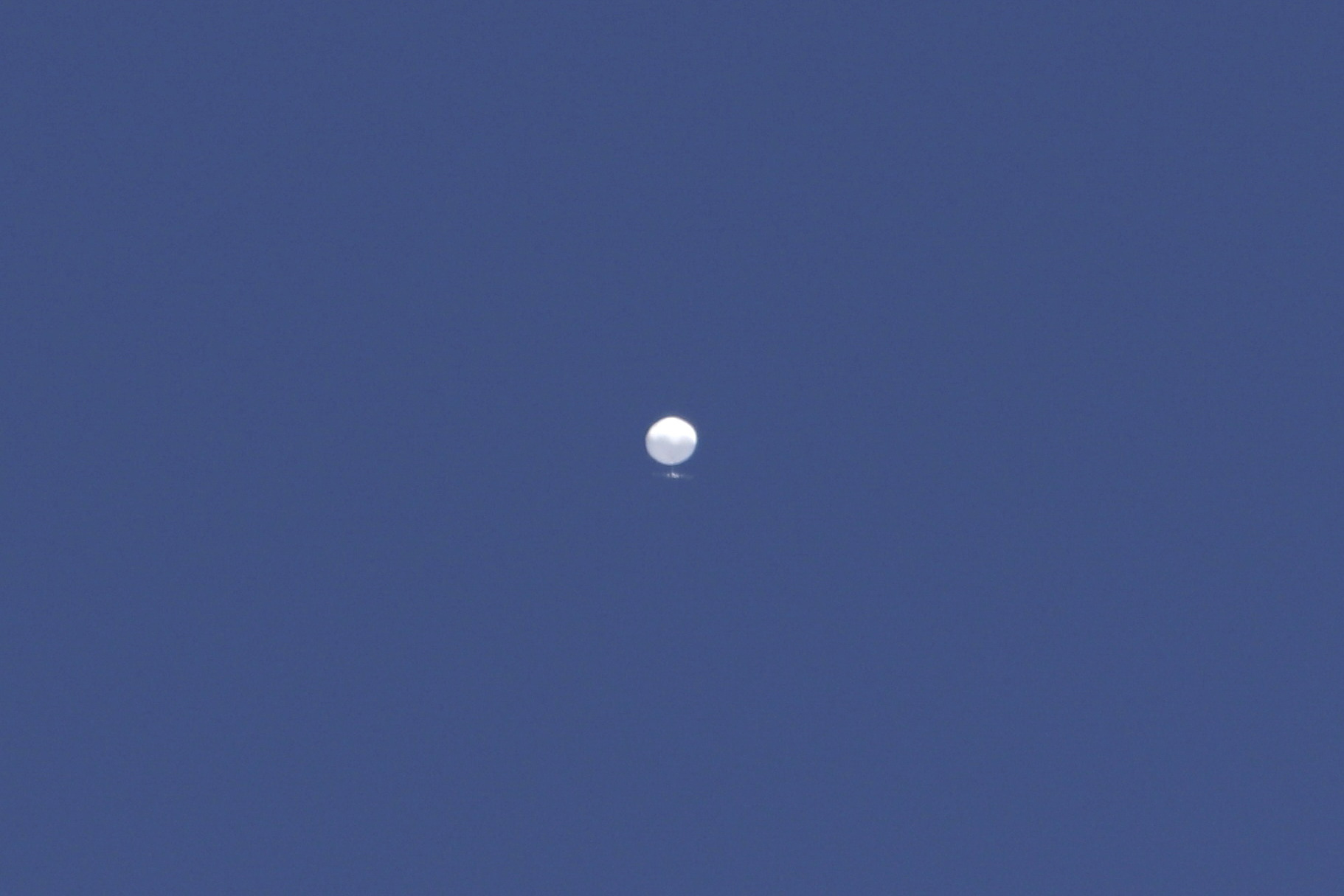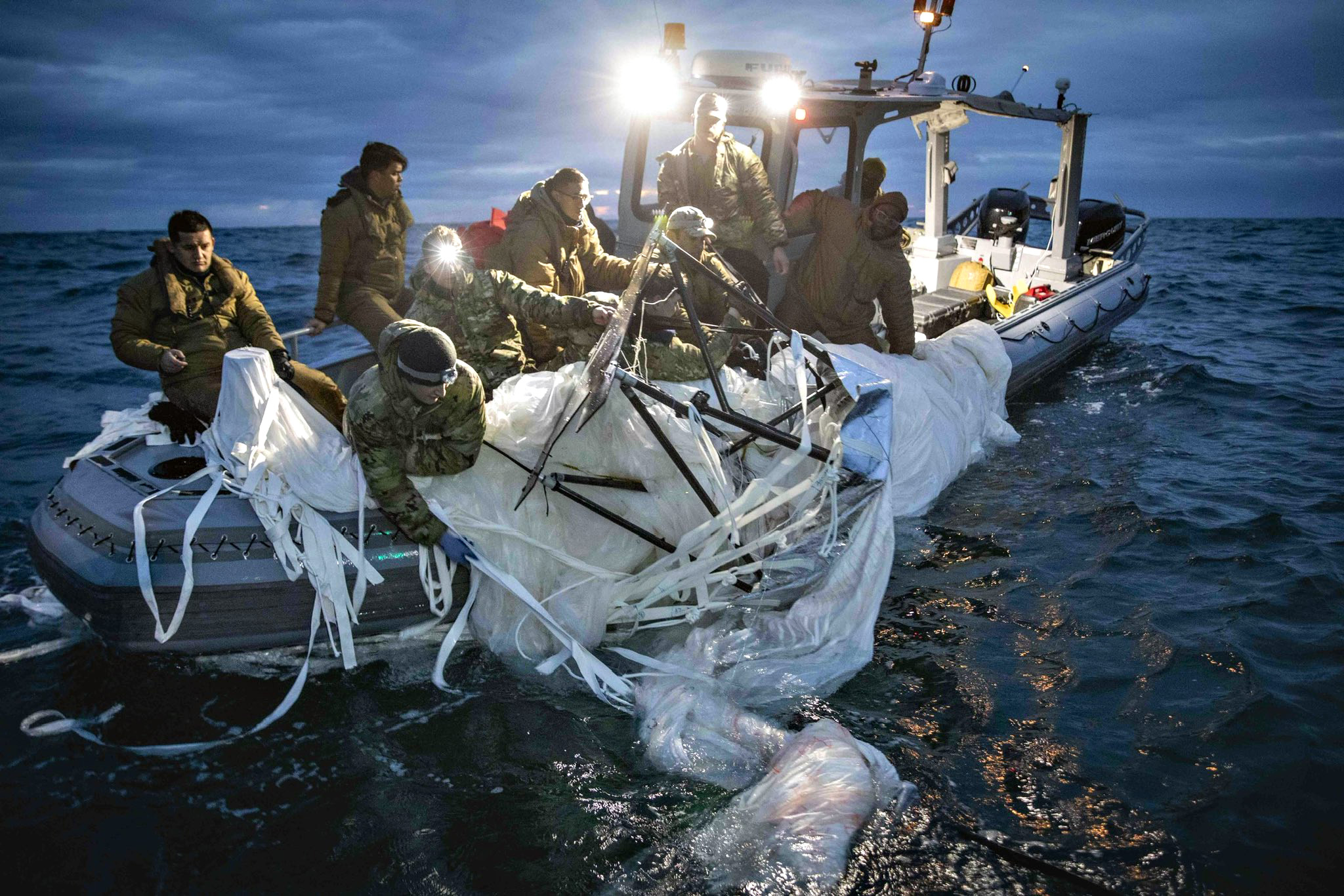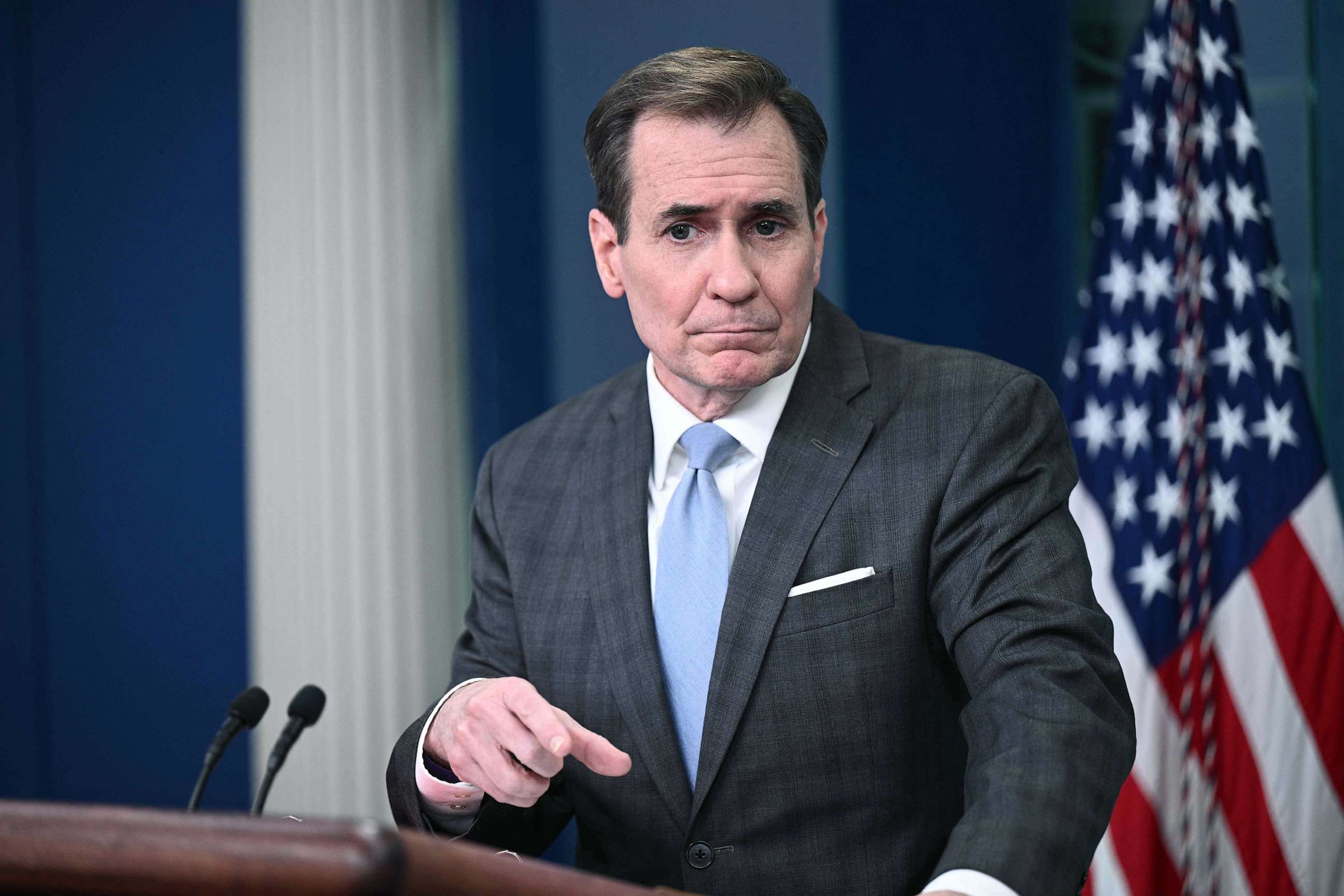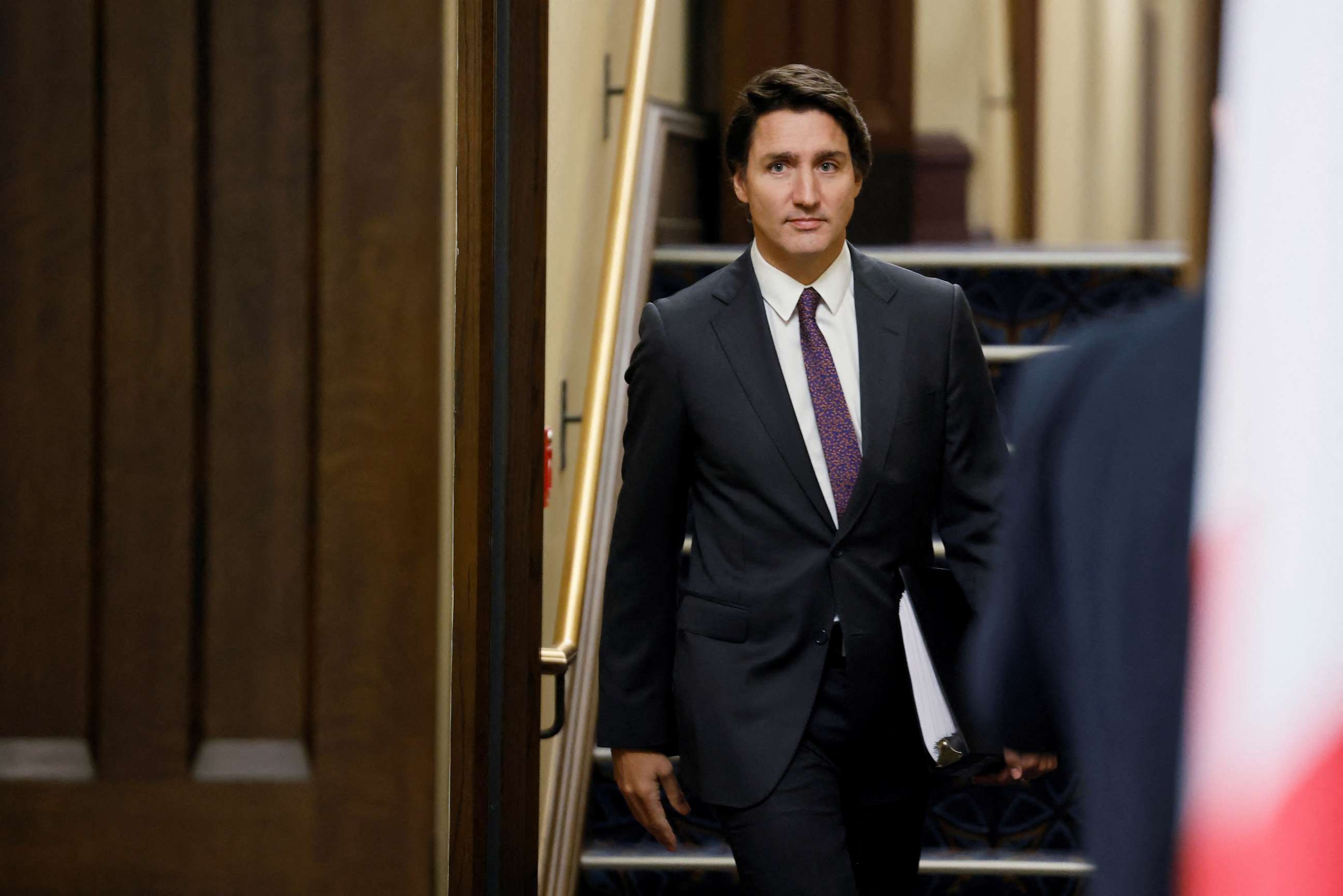4 flying objects have been shot down over North America: Timeline of key moments
Since late January, four vessels, including a suspected Chinese spy balloon, have been seen in U.S. and Canadian airspace and were all subsequently shot down by the U.S. military.
Some details link the incidents, including all of them occurring within a few days of each other, but there are key differences as well -- with U.S. officials saying that the objects, which were not all flying at the same height or following the same path, did not necessarily resemble one another.
Despite the first balloon being described as a Chinese reconnaissance vessel -- an assessment China has sought to undercut -- the origins and purpose of the other objects have not been confirmed by the U.S. military.
Senate Majority Leader Chuck Schumer said on ABC's "This Week," before a fourth object was downed, that he had been briefed that three of them were balloons.
Below is a timeline of key moments involving all four objects.
One U.S. official attributed the rise in the sightings to boosted surveillance capabilities by the military and not a rush of new foreign objects flying over American airspace.
"Northern Command has adjusted the parameters of their radar capabilities in a way that they can see more than they could before," this official said.
"That's not to say they were blissfully ignorant before," the official said, "but there are lots of things floating around and now we are more finely attuned to it."
The first balloon
Jan. 28
The balloon entered U.S. airspace on Jan. 28 north of the Aleutian Islands in Alaska, according to a senior military official. Photos from later sightings appear to show the craft was an enormous white dirigible with an undercarriage described by one U.S. official as the size of three buses.
Jan. 30
The vessel then entered Canadian airspace over the Northwest Territories on Jan. 30, the senior military official said.
Jan. 31
The balloon then traveled south and reentered U.S. airspace over northern Idaho on Jan. 31, according to a senior military official. The White House later said that President Joe Biden was briefed the same day, for the first time, about the balloon.

Feb. 1
4:21 p.m. ET: One of the earliest sightings confirmed by ABC News was in Reed Point, Montana, on Feb. 1.
From Montana, the balloon traveled southeast through South Dakota and Nebraska, according to U.S. officials.
The administration later said that Feb. 1 is when President Biden first ordered the balloon to be taken down once it was feasible, with the threat of harm to civilians ultimately delaying military action.
Feb. 4
11:15 a.m.: The balloon was captured over South Carolina, in Lancaster, as it continued moving southeastward toward the coast.
2:39 p.m. ET: Footage captured the balloon being shot down over the Atlantic Ocean off the coast of South Carolina.
The balloon was ultimately downed in U.S. airspace over U.S. territorial waters by fighter aircraft assigned to U.S. Northern Command, according to Secretary of Defense Lloyd Austin.
The balloon was struck by an F-22 firing a missile roughly six nautical miles off the South Carolina coast, according to a senior U.S. defense official.
The Chinese foreign ministry criticized the United States for downing its balloon.
"China expresses its strong dissatisfaction and protest against the U.S. using force to attack civilian unmanned airships," officials said in a statement.
The ministry asserted that they told the U.S. that the balloon was an airship "for civilian use and entered the US due to force majeure, which was completely accidental."

Feb. 6
U.S. Navy vessels swarmed a widespread debris field with divers and cranes to retrieve pieces of the balloon.
A senior government said the FBI was expected to take custody of any recovered components of the balloon's payload and to ship those to its laboratory in Quantico, Virginia, for analysis and intelligence gathering.
ABC News confirmed that, according to two senior officials, the U.S. believed the balloon had a self-destruct capability. The U.S. wasn't sure why this wasn't used, though it was probably for the same reason the U.S. didn't shoot it down over land -- a risk of harm.
Feb. 8
The Pentagon's Brig. Gen. Pat Ryder disclosed that China had conducted four balloon surveillance missions over "sensitive sites" within U.S. territory during recent years, but did not disclose exactly where or when the incidents occurred.

Feb. 9
Senior FBI officials familiar with the operation said in a conference call with reporters that the bureau's evidence response team had retrieved only a small amount of the balloon and didn't yet have enough evidence to conclude what China's intent was.
Only an "extremely limited" amount of the vessel was recovered so far and brought to the FBI's evidence collection lab at Quantico, the officials said.
Separately, State Department official said that the Biden administration was looking into "taking action" against China for the surveillance balloons sent over U.S. territory.
An official confirmed that the U.S. assesses that China has overflown surveillance balloons above 40 countries, which ABC News and other outlets have previously reported.
The downed balloon "had multiple antennas to include an array likely capable of collecting and geo-locating communications. It was equipped with solar panels large enough to produce the requisite power to operate multiple active intelligence collection sensors," a State Department official said.
Administration officials also revealed more information on China's prior balloon operations targeting the U.S. In a television interview, Defense Secretary Austin said the aircraft had been detected over parts of Florida and Texas.
A senior U.S. official previously told ABC Chief Global Affairs Correspondent Martha Raddatz that incursions into American airspace had also taken place over Hawaii and off the coast of the continental U.S. -- specifically near Coronado, California, and Norfolk, Virginia -- where two of the nation's largest naval bases are located.

Feb. 10
U.S. officials said the undercarriage of the balloon was located in waters off South Carolina.
An official told ABC News Chief Global Affairs Correspondent Martha Raddatz it was found on Feb. 9 and was largely intact.
It had not yet been retrieved, the officials said, but would likely be done with a crane or a winch from a vessel.
Feb. 14
ABC News confirmed that U.S. intelligences agencies were tracking the spy balloon when it left China on what they thought would be an eastward path toward Guam and Hawaii when it took an unexpected northern turn toward Alaska, according to a U.S. official.
The agencies have been examining the possibility that weather conditions pushed the balloon off course, as first reported by The Washington Post, and that the Chinese may not have initially intended to traverse the United States. However, once the balloon was in U.S. airspace, it was intentionally flown over sensitive U.S. sites.
Feb. 15
State Department spokesperson Ned Price said that didn't matter whether the aircraft was blown off course -- it was still a violation of U.S. sovereignty.
"I'm not going to opine on what the [Chinese goverment] may or may not have intended, but in key ways it doesn't matter. It's completely immaterial," Price said. "It's immaterial because this was a high-altitude surveillance balloon that did violate our airspace. It did violate international law."
A second flying object, over Alaska
Feb. 9
Another object was seen late on Feb. 9, White House spokesman John Kirby later told reporters. He said it was a small object and, according to the Pentagon, it was traveling "northeasterly across Alaska" and two F-35 fighter jets were sent up to identify it.
Feb. 10
The jets did another flight "early this morning," on Feb. 10, to try to learn more and that flight "ended in a shootdown," Kirby said.
Two F-22s tracked the object and one of them fired the AIM-9X sidewinder missile near the location of Deadhorse, Alaska, which is right on Prudhoe Bay, according to the Pentagon.
Fighter aircraft checked if the object was manned and determined it wasn't, Kirby said.
"It was difficult for the pilots to glean a whole lot of information," he said, adding, "There was a limit to how much they could divine."

The object was described as "cylindrical and silver-ish gray" and seemed to be floating, a U.S. official said.
Asked if was "balloon-like," the official said, "All I say is that it wasn't 'flying' with any sort of propulsion, so if that is 'balloon-like' well -- we just don't have enough at this point."
President Biden, briefed on Feb. 9, gave the order to shoot it down on the morning of Feb. 10. Kirby said the "predominant" reason Biden ordered it shot down was the "safety" of flights traveling at that altitude and the fact that it was at the mercy of prevailing winds made its flight path less predictable. "And the president just wasn't able to take that risk."
"We don't know who owns this object," Kirby said.
At the Pentagon, Brig Gen. Ryder said the object was detected by ground radar. He said it was shot down at 1:45 p.m. ET.
A third object, over Canada
Feb. 10
The North American Aerospace Defense Command detected a high-altitude object over Alaska late on Feb. 10, according to Ryder, the Pentagon spokesperson. Two U.S. F-22 aircraft monitored the object over Alaska, then Canadian aircraft joined as it crossed into Canadian airspace, he said.

Feb. 11
Following a call from Canadian Prime Minister Justin Trudeau to President Biden, Biden authorized that U.S. aircraft take down the new high-altitude object and a U.S. F-22 shot it down with a sidewinder missile, Ryder said.
The leaders authorized that the "unidentified, unmanned object" be taken down "out of an abundance of caution and at the recommendation of their militaries," according to a White House readout of Trudeau and Biden's call. They also stressed the importance of recovering the object to determine its purpose or origin, the readout stated.
"Canadian and U.S. aircraft were scrambled, and a U.S. F-22 successfully fired at the object," Trudeau tweeted.
The object was shot down approximately 100 miles from the Canada-U.S. border in central Yukon, Canadian Defense Minister Anita Anand told reporters during a press briefing on Feb. 11.
It appears to have been a "small, cylindrical object" that was flying at about 40,000 feet, she said.
"These objects did not closely resemble and were much smaller than the [suspected Chinese] balloon and we will not definitively characterize them until we can recover the debris, which we are working on," a spokesperson for the White House Security Council later told ABC News.
A fourth flying object, over Lake Huron
Feb. 12
Another high-altitude object was shot down on the afternoon of Feb. 12, this one over Lake Huron, three U.S. officials confirmed to ABC News, marking the latest in a string of such incidents.
The object was shot down by a U.S. military aircraft, according to one of the officials.
A senior administration official said Biden directed that the object be shot down "out of an abundance of caution and at the recommendation of military leaders."

This official said the object was detected on radar over Montana on Feb. 11 and was seen again on radar over Wisconsin and Michigan on Feb. 12.
The object was octagonal in structure, unmanned and traveling at about 20,000 feet, the official said. There was no indication of surveillance capabilities but the administration could not rule that out.
Feb. 15
Defense Secretary Austin pushed back on the idea of a possible intelligence failure given that, for years, balloons or other small objects have traversed the skies over the U.S. undetected. "No, it's how you use your radars," he told NBC News. "They recently made some adjustments on our radars and opened up the aperture, and they're analyzing the data a bit differently. We typically are focused on things that are moving fast."
"if you're going to want something that's operating in those spaces, the [Federal Aviation Administration] should be notified," he said.
President Biden speaks out
Feb. 16
Biden, after facing pressure from lawmakers on both sides of the aisle to be more transparent, gave a formal speech on the Chinese spy balloon and other aerial objects shot down by the U.S. military.
He said the U.S. "acted out of an abundance of caution" when it shot down the three unidentified aerial objects flying over North American airspace.
The U.S. doesn't believe the objects were related to China's surveillance program or that they were surveillance vehicles from other countries, Biden said. The most likely scenario, he said, is that they were balloons tied to private companies or research institutions for studying weather or conducting scientific research.
He said he ordered the objects to be taken down "due to hazards to civilian commercial air traffic" and because officials couldn't rule out the surveillance risk of sensitive sites.
On the Chinese spy balloon, Biden said he would "make no apologies" for taking it down.
The action, he said, sent "a clear message: The violation of our sovereignty is unacceptable. We'll act to protect our country and we did."
ABC News' Luke Barr, Victoria Beaule, Adam Carlson, Shannon K. Crawford, Jack Date, Meredith Deliso, Layla Ferris, Justin Fishel, Cheryl Gendron, Ben Gittleson, Kerem Inal, Julia Jacobo, Chris Looft, Luis Martinez, Josh Margolin, Matt Seyler and Cindy Smith contributed to this report.




